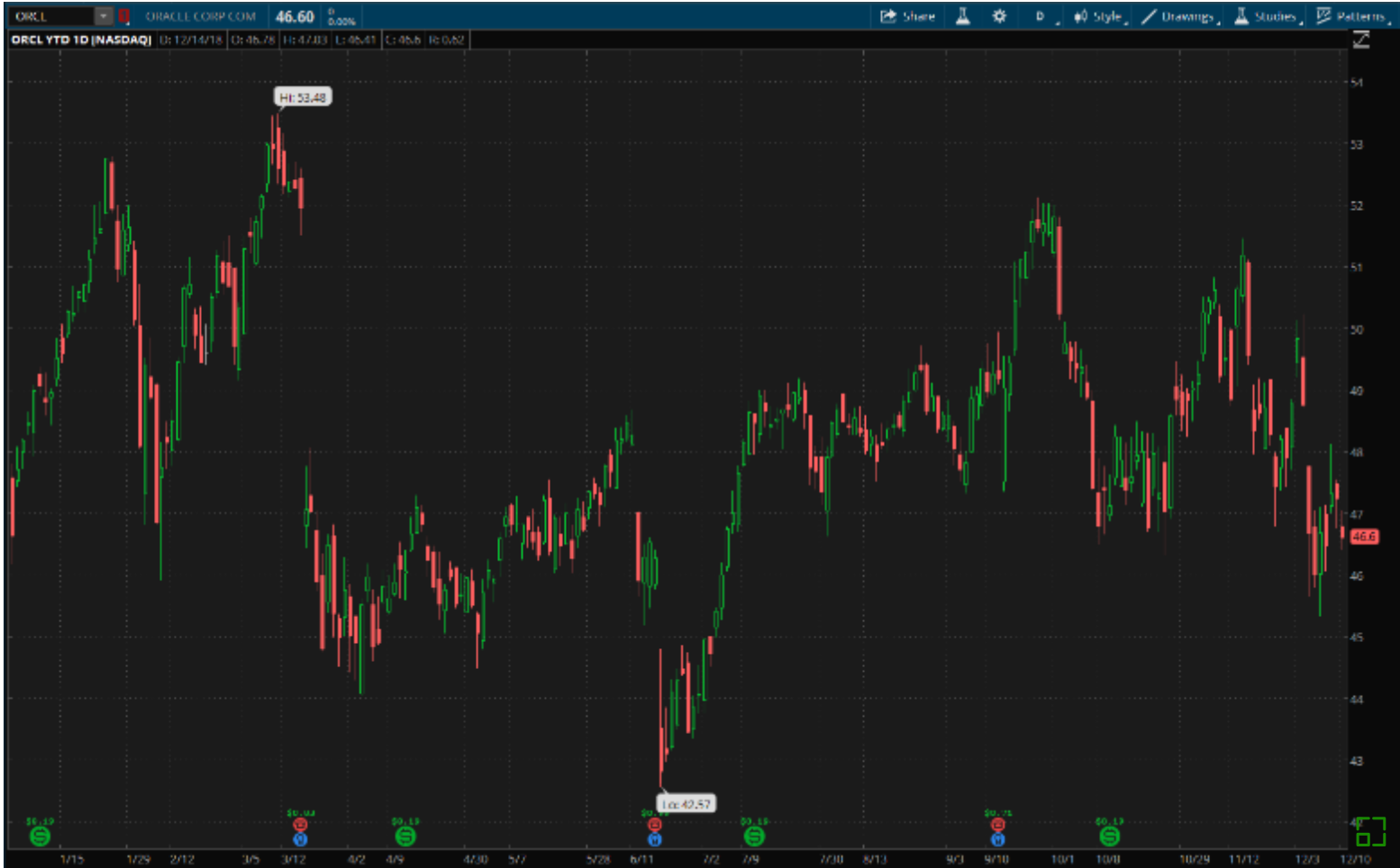Like many older tech companies, Oracle Corporation (NYSE: ORCL) has been in the process of transitioning away from its legacy database
business towards a subscription-based cloud business for some time. The next update on ORCL’s cloud efforts comes when it reports
fiscal second-quarter earnings after the close on Monday, Dec. 17.
For the quarter, ORCL is expected to report adjusted EPS of $0.78 on revenue of $9.52 billion, according to third-party analyst
estimates. In the same quarter last year, adjusted EPS came in at $0.70 on revenue of $9.63 billion. Similar to recent quarters, a
strong U.S. dollar is expected to pressure results.
Analysts have indicated they’re primarily focused on the company’s cloud division, which has delivered an underwhelming
performance compared to expectations in recent quarters. Over the past year, revenue growth in the division has decelerated from
high-single digits to low-single digits.
For fiscal Q2, analysts are forecasting $6.63 billion in revenue from cloud services and license support. When ORCL reported
fiscal Q1 results, that division generated $6.61 billion in revenue, a 3% year-over-year increase.
Outside of the division’s performance, the recent departure of 22-year ORCL veteran Thomas Kurian, who was in charge of the
company’s product development and a key figure in its cloud efforts, was another red flag for many analysts. Originally, the
company had said he was taking extended time off. Then, not too long after, Kurian left and joined Alphabet Inc
(NASDAQ: GOOG) (NASDAQ: GOOGL) as the head of Google Cloud.
While cloud performance is likely to draw much of the attention, ORCL’s other divisions will be important too as they’ve been
drivers of the company’s top and bottom-line beats and misses. In fiscal Q1, ORCL reported $867 million in revenue from cloud
license and on-premise license, $904 million from hardware, and $813 million from services. Those segments declined year-over-year
by 3%, 4%, and 5%, respectively.

Up and Down. Since early 2017, ORCL has been stuck mostly between the $43 and $53 level. A weaker-than-expected report in June
sent shares quickly down to the mid-$42 level. The stock has recovered since then, but shares have been pulling
back ahead of today’s report. Chart source: thinkorswim® by TD Ameritrade. Not a recommendation. For illustrative purposes only.
Past performance does not guarantee future results.
Oracle Options Activity
Around the upcoming earnings release, options traders have priced in a 6.1% ($2.83) stock move in either direction, according to
the Market Maker Move indicator on the thinkorswim® platform. Implied volatility is on the high end ahead of today’s report,
sitting at the 91st percentile as of this morning.
In short-term trading at the Dec. 21 monthly expiration, calls have been active at the 49 and 50 strike prices. On the put
side, volume has mostly been concentrated between the 42 strike and 46 strike. Open interest was highest at the 52.5-strike call, a
level the stock was trading closer to at the end of September and mid-November, but is now a ways below it.
There hasn’t been much trading that stands out over the next several weekly expirations. At the Jan. 18 monthly expiration, the
50-strike call has been heavily traded, while the 45-strike put is seeing a lot of activity as well.
Note: Call options represent the right, but not the obligation, to buy the underlying security at a predetermined price over
a set period of time. Put options represent the right, but not the obligation to sell the underlying security at a predetermined
price over a set period of time.
Information from TDA is not intended to be investment advice or construed as a recommendation or endorsement of any
particular investment or investment strategy, and is for illustrative purposes only. Be sure to understand all risks involved with
each strategy, including commission costs, before attempting to place any trade.
© 2018 Benzinga.com. Benzinga does not provide investment advice. All rights reserved.